Many players have a good understanding of how to play the opening.
They follow the good ol’ opening principles:
- Develop your pieces
- Castle your king early
- A knight on the rim is dim
- Control the center
- Don’t push too many pawns
- Develop knights before bishops
- Don’t move the queen out early, etc.
For every opening, they try to recall the theory or ideas involved, and this seems to do the trick for them.
But after the opening, many of them get stuck because they don’t know how to proceed.
What plans or strategies to adopt? What best square to place their pieces?
They then proceed to make a couple funny moves and before long, checkmate lands on the board.
Sounds like this piece is talking about you? Then keep reading.
The chess legend Rudolph Spielmann once said, “Play the opening like a book, the middlegame like a magician and the endgame like a machine.“
From this quote, it can be deduced that the middlegame is where creativity matters the most.
Opening are not exactly tough to master. One just has to play by the book.
Endgames too can be played perfectly when one follows the pre-analyzed lines. There are endgame tablebases that contain precalculated exhaustive analysis of chess endgame positions up to 7 pieces!
However, when it comes to the middlegame, there are so many pieces on board that you just have to let your creativity shine. This is the only way to beat your opponent.
When Does The Middlegame Begin?
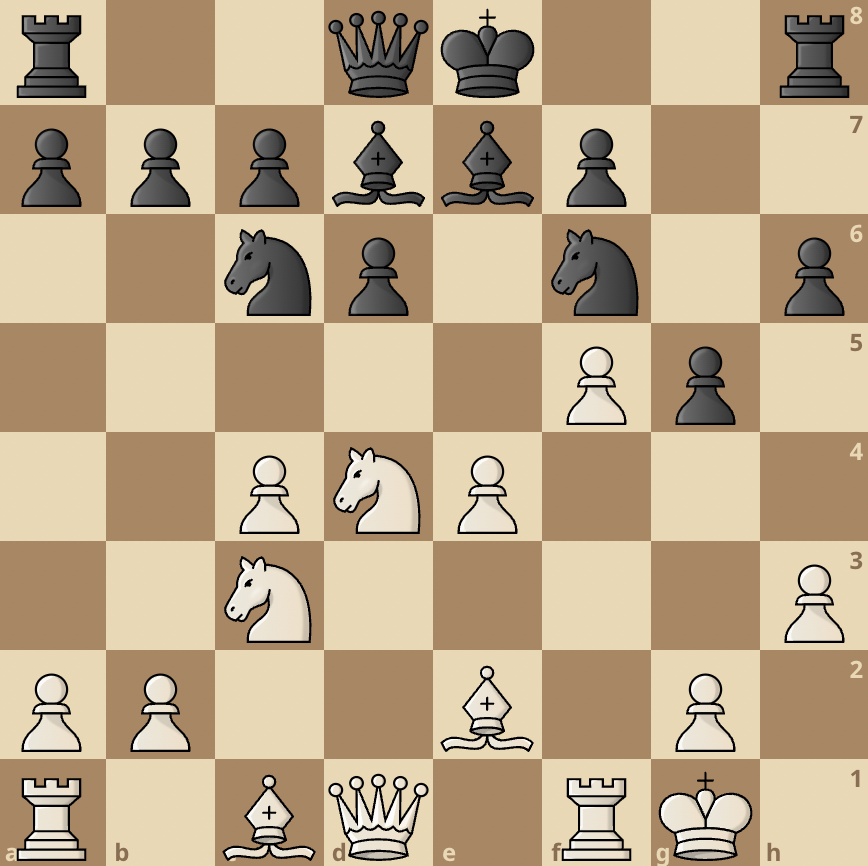
A chess game is divided into three stages: the opening, the middlegame, and the endgame.
The middlegame begins when you have completed the development of your pieces, castled your king, and connected your rooks.
At this stage, you begin to come up with plans and ideas to hold on to as the game progresses. Whatever strategy you adopt will shape the rest of the game.
It’s necessary to always have a strategy whenever you play a game of chess. You should NEVER move pieces because you feel like it.
It should always be based on a carefully calculated decision and plan. In his book, former world champion Garry Kasparov said, “It’s better to have a bad plan than no plan at all.”
That said, here are 12 tips that will help you triumph in the middlegame stage:
- Ask Yourself Important Questions
- Come Up With A Plan
- Centralize Your Pieces
- Ensure You’re Benefitting From a Piece Trade
- Amass a Small Number of Advantages
- Learn how to Identify Closed and Open Positions
- Know the Minor Pieces Best Suited to Closed and Open Positions
- Utilize Pins, Forks, and Skewer Tactics
- Avoid Isolated Pawns
- Create Outposts for Your Pieces
- Play Through The Middlegame of Experienced Masters
- Start Playing Correspondence Chess
Ask Yourself Important Questions
Before making any move, ask yourself a few questions to ensure that you don’t lose a piece or miss an opponent’s free piece that could be taken.
Asking yourself these questions in every game would help improve your middlegame skills positively. They include:
- Do I have any hanging pieces that my opponent could simply capture?
- Is there any hanging piece on my opponent’s board that I can simply capture?
- What was my opponent’s last move all about? What is their idea?
- Will this move make my position worse or better?
- Are there any flaws in my opponent’s position that I can exploit?
Before moving any piece in the middlegame, master chess players have learned to always ask themselves these questions.
They’ve done it so many times that they no longer need to have the list of questions in their heads; instead, they simply glance at the board and instinctively answer all of the questions before moving.
Check out this example below:
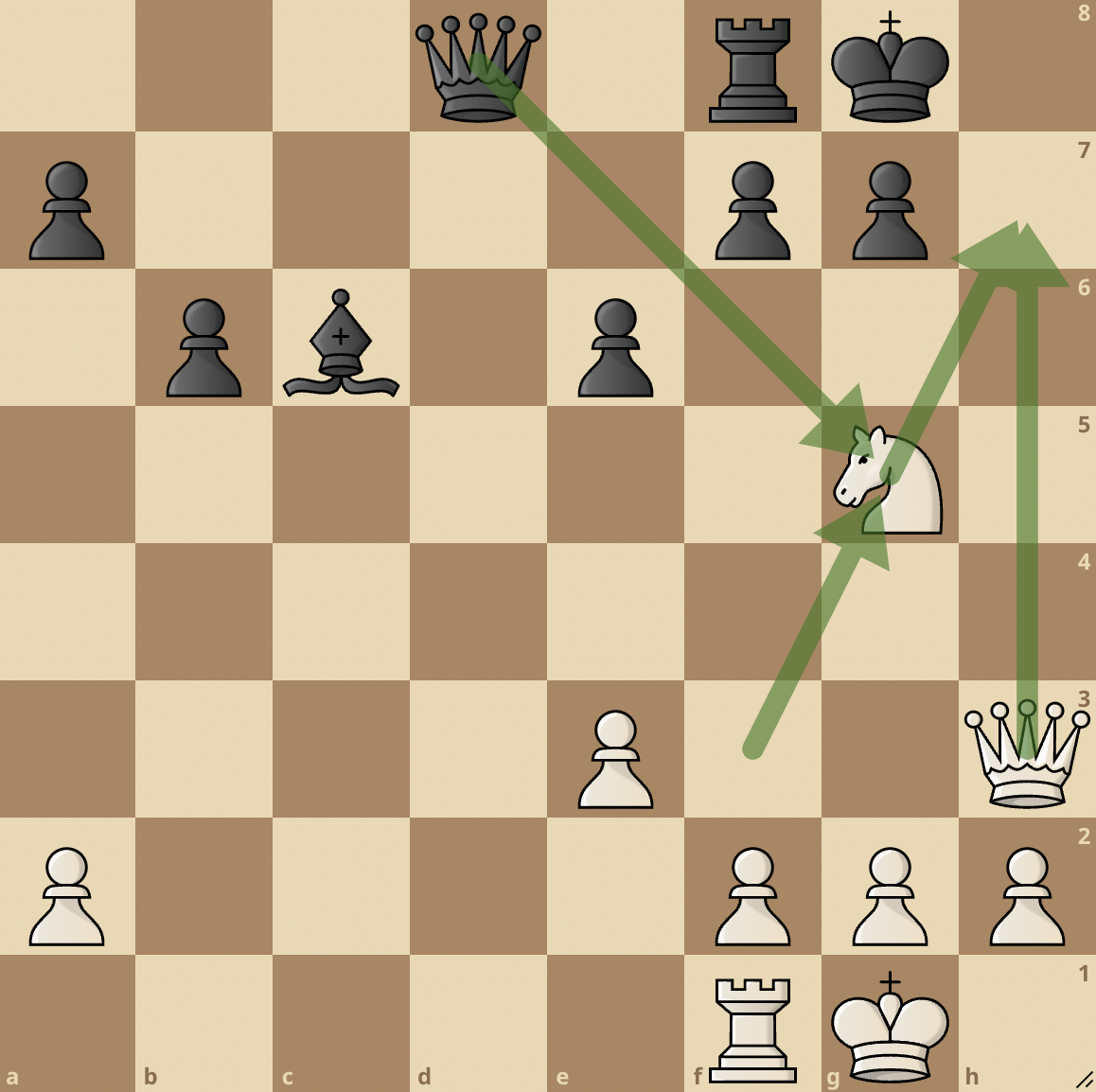
From the position above, we can see that White just moved his knight from the f3 square to the g5 square threatening a mate in one.
As Black, it’s easy to panic in the face of an immediate checkmate but the 5 questions to ask should come to mind.
A skilled player will immediately notice that the knight moved to a square that is undefended, which means its a hanging piece and can be captured by the Black queen.
Answering these questions regularly during your games will assist you in avoiding huge chess blunders.
Come Up With A Plan
We’ve seen a lot of beginners play chess, and when we ask them “why did you make that move?” or “what was your plan?“, they typically respond, “I don’t have a plan, I’m just playing!” and this is a poor strategy that only slows down improvement.
When you don’t plan, you’ll find yourself responding to your opponent’s plan since you don’t have anything specific in mind.
So, how do one plan in chess? Here’s the answer- You should sit back and imagine what you want to achieve once you’ve developed your pieces in the opening, castled your king, and connected your rooks.
You may have recognized that your opponent has weak pawns, so your planning and strategy would focus around them, or they may have a weakened king’s position, in which case the aim would be to get your pieces there to exploit the vulnerability and checkmate the king.
It’s not difficult at all. All you have to do now is picture where you want your pieces to go and then put them to work.
If your opponent has a weak square on d6 that may be occupied by a knight, for example, your interim goal could be to getting a knight to occupy that weak square, limiting the opponent’s activity and increasing your chances of winning the game.
Lastly, given that the goal of the game is to checkmate the king, your conventional strategy may consist solely of attacking the king. While this is a decent strategy, it does not always succeed.
This is due to your opponent’s possession of other pieces capable of readily defending the king.
In this situation, you can choose to attack minor weaknesses on the opposing side, with the intention of returning to the king after conquering that side.
A good example of this is the minority attack where one player advances pawns on one side of the board to provoke weaknesses that can be exploited. It’s always feasible to make up weaknesses on your opponent’s wing to attack.
Here is a sample game that shows how former world champion, Anatoly Karpov was able to carry out a minority attack with his a- and b- pawns, landing Black a weak c- pawn that turned to the point of attack. His opponent tried as much as possible to save the pawn but ended up in a losing position.
Touch the moves or move the board around for a better interactive experience.
Centralize Your Pieces
In chess, the player that controls more squares will, more often than not, control the flow of the game and ultimately win the game.

Centralizing your pieces means bringing them to the center of the board, from where they can control more squares.
There’s a saying in chess that “knights on the rim are dim“. This means that the knight should not be put on the rim or in the corner or edge of the board, but instead in the center where it can control more squares.
The most powerful piece in chess is the queen. The primary reason for the queen’s strength is the number of squares she controls.
When the queen is centralized, she controls many squares and can easily move across the board to deal maximum damage.
Some other advantages of centralizing your pieces include the following:
- Centralized pieces can quickly access more parts of the board than when deployed on edge.
- When you centralize your pieces, they can quickly attack different sides of the board as they control more squares.
- Centralized pieces can also effectively restrict the movement of enemy pieces.
A player who has his pieces centralized will have an easier time playing the middlegame and, by extension, gain a sizable advantage going into the endgame.
Ensure You’re Benefitting From a Piece Trade
Many beginners frequently make this one grave mistake:
They trade their active chess pieces for their opponent’s inactive ones.
For example, it’s generally known that knights excel in closed positions, so you should try to retain your knights whenever you’re faced with a closed position.
Similarly, bishops excel in open positions, so you should look forward to keeping the bishop pair in those kind of positions.
Never swap your active minor pieces for your opponent’s inactive minor pieces. You can actually do the reverse though – swapping your inactive chess piece for that of your opponent’s active piece.
You should also look to trade for positional advantage. You should go for it if you’re sure a trade will grant you a considerable positional advantage.
That is usually known as a positional exchange sacrifice.
Learning to exchange pieces that will benefit your position will significantly improve your chess middlegame.
Another thing to note in the middlegame is that you should trade as many pieces as possible except pawns if you have a material advantage, this aids in reducing your opponent’s counter-play and bringing you closer to converting the win.
Amass a Small Number of Advantages
It’s rare to see games in which grandmasters defeat each other owing to hilarious blunders or errors. How do they still win against each other when the majority of their games are drawn?
It’s simple — They aim to build up small advantages, which combine over time to produce a significant advantage, and this is how games are won.
Gaining control of an open file, occupying a weak outpost with a knight, having a protected and deadly passed pawn, and being able to build pressure against your opponent’s weak pawns are all examples of these advantages.
After gaining a few small advantages, gradually increase the pressure on your opponent’s pieces and king. Your opponent will be compelled to crack at some time, allowing you to take the victory.
Learn How to Identify Closed and Open Positions
It is crucial for players looking to improve their chess middlegame to understand the difference between an open position and a closed one.
What determines whether a position is open or closed is the pawn structure. Unfortunately, most beginners find it hard to decipher whether a position is open or closed and how to navigate it.
A few things to look out for when checking if a position is closed or open will be discussed.
Ideas to look for in an open position include:
- Three or more pawn islands can be found (a pawn island is a group of pawns of the same color side by side, without any pawn of the same color diagonally adjacent to them)
- There are fewer pawn chains.
- More than two pawns have already been traded.
- Fewer pawns are blocking the squares on the board.
If you notice these four ideas in your middle game, you’re playing an open position.

However, in a closed position, the opposite is the case. You can identify a closed position through the following ideas:
- There are more pawn chains on the board.
- There are very few pawn islands (two or fewer)
- Less than two pawns have been traded, or no pawns at all.
- Most of the squares are blocked by pawns.
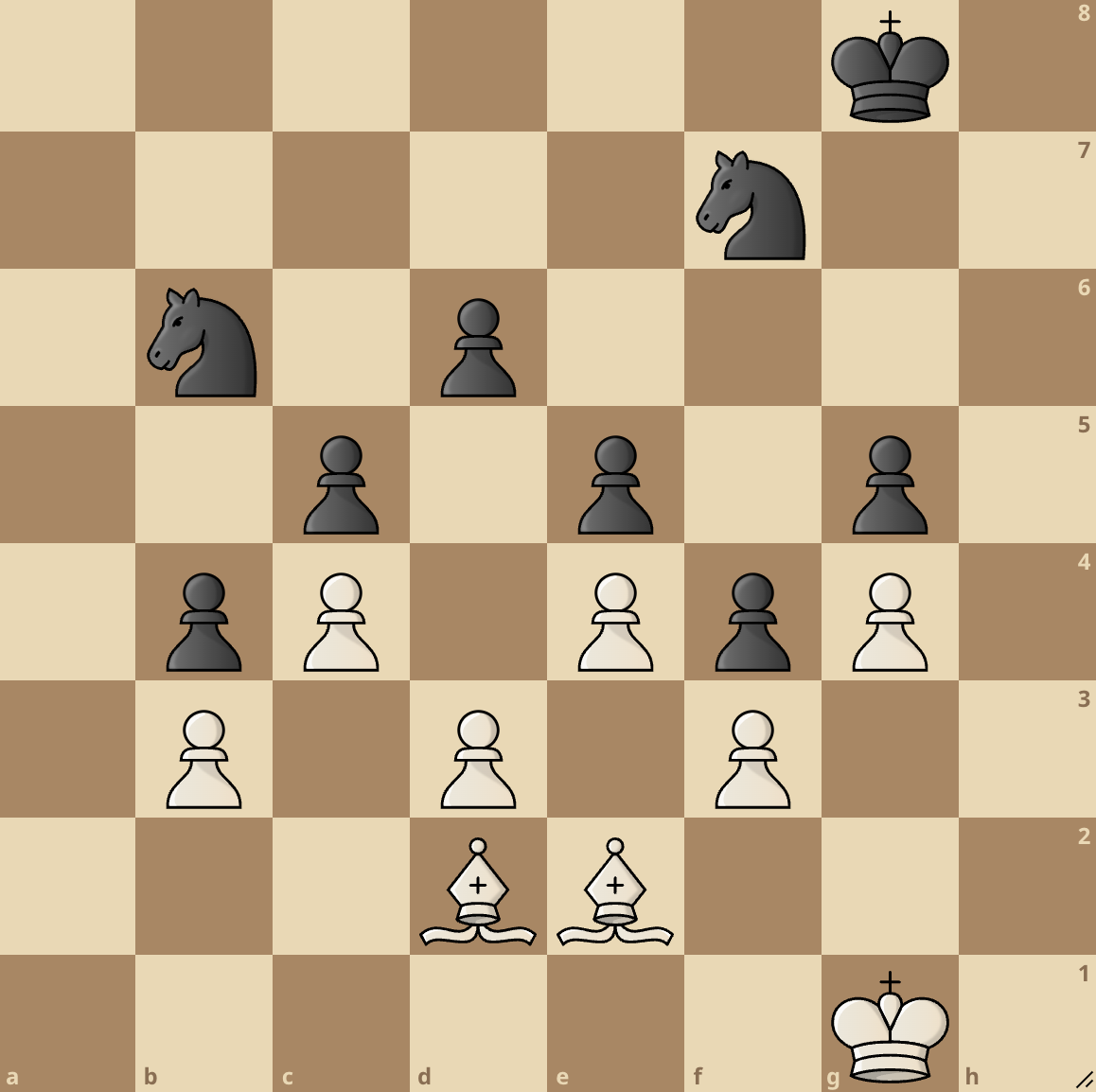
Know the Minor Pieces Best Suited to Closed and Open Positions
Chess pieces all have their different roles and characteristics. Each of them has a particular way they move and capture enemy pieces.
Knowing how to coordinate your pieces in the middlegame – which piece is more suitable for open positions and which is best suited to closed positions is very important if you want to improve your game.
The minor piece that is best suited to open positions is the bishop, while the minor piece that is perfect for closed positions is the knight.
We will now examine the reason behind this.
We already know that an open position has abundant space on the board, and the pawns are not blocking a lot of squares.
This setup is ideal for the bishop due to its range of movement. The white-squared bishop can move diagonally on any white square on the board, while the dark-squared bishop moves diagonally on any available black square.
In an open position, there are many available squares. Therefore, the bishop is the minor piece best suited to the position.
However, in a closed position, the knight functions better. This is because, in a closed position, there are a lot of pawns blocking the squares a bishop will need to move around.
This is where the knight comes into play. Knights are much more effective in a closed position because they can jump over chess pieces and occupy a square.
Utilize Pins, Forks, and Skewer Tactics
Do you want to play the middlegame like a magician and destroy your opponent? Then you need to utilize pins, forks, and skewers.
We will now explain what pins forks and skewers are.
Pin
A pin is a chess tactic in which a player makes sure an enemy piece cannot move without exposing a more valuable piece on its other side to the risk of capture by the attacking piece.
The act of bringing your attacking piece to pin an enemy piece is called pinning.
The defending piece that is restricted from moving is described as a pinned piece.
Only pieces that can move an indefinite number of squares in a horizontal, vertical, or diagonal line (pieces like bishops, rooks, and queens) can pin. Kings, knights, and pawns cannot pin.
The pin is a deadly move that can result in checkmate or severe material loss. The pin is such a strong tactic that Fred Reinfeld, a great chess writer, once said, “The pin is mightier than the sword.”
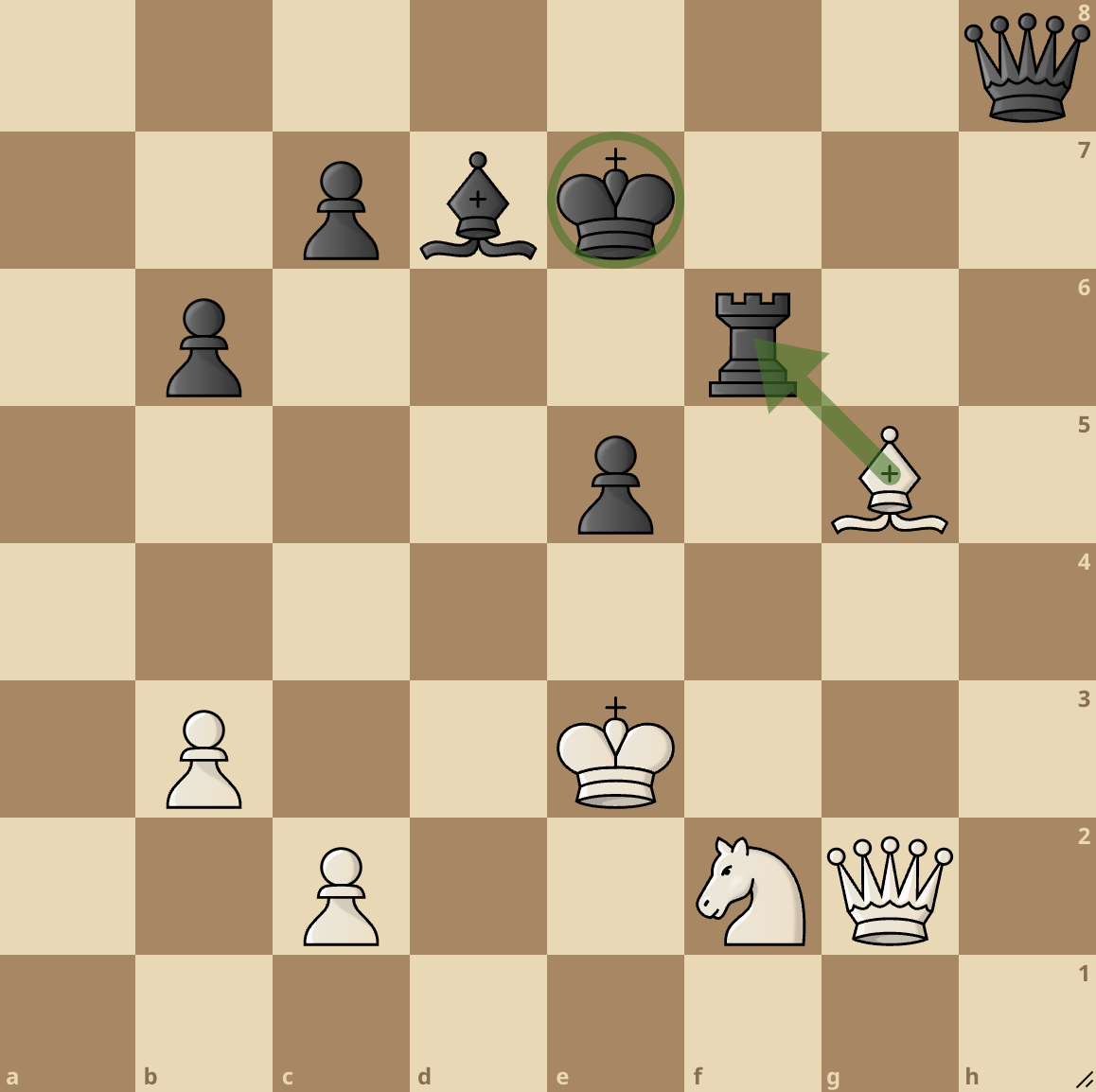
We covered the concepts of pin in more details here: What is a Pin in Chess? A Beginner-Friendly Guide
Fork
A fork is a tactic in which one piece attacks multiple enemy pieces simultaneously. The attacking piece usually aims to capture one of the forked pieces.
The opponent often cannot counter every threat and must lose at least one of the forked pieces. A fork is most effective when it is forcing, such as when the king is put in check.
The type of fork is named after the piece delivering the fork. For example, a fork by a knight is a knight fork.
If the King is one of the attacked pieces, the term absolute fork is sometimes used. A fork not involving the enemy king is called a relative fork.
A fork of the king and queen, which is the fork that gains the highest material, is called a royal fork.
A fork of the enemy king, queen, and one (or both) rooks is known as a grand fork.
A knight fork of the enemy king, queen, and possibly other pieces is sometimes called a family fork or family check.
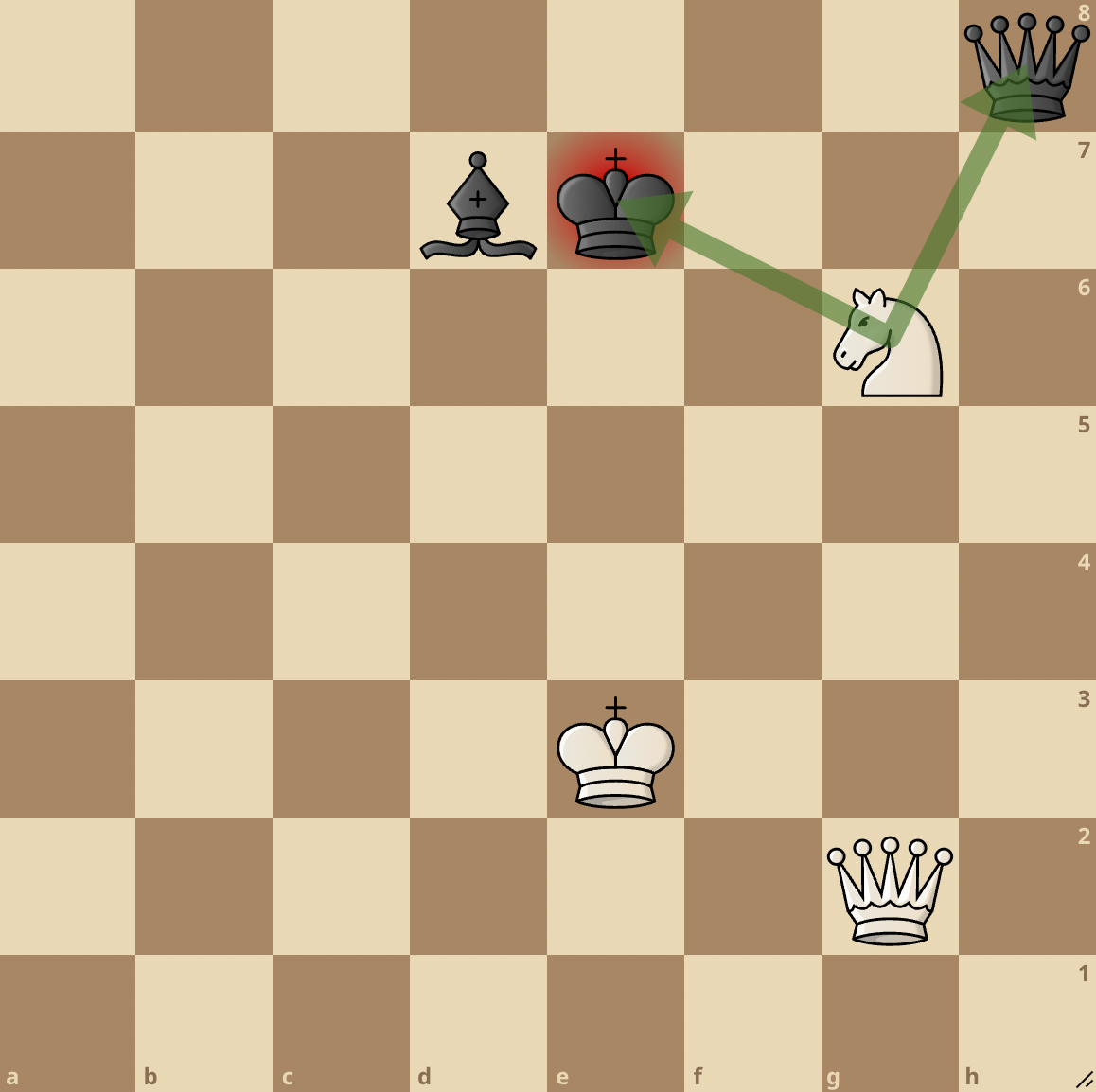
Skewer
A skewer is a chess tactic that occurs when an attacked piece must move to safety but will expose a lower-valued piece behind it. A skewer is sometimes referred to as a “reversed pin.”
One crucial difference between a pin and a skewer is that in the case of a skewer, the attacked piece has a higher value than the piece behind it. This is in contrast to a pin where the lower-valued piece is in the front.
When you learn to spot and apply these tactics to your middle game, you will significantly improve and win many games.
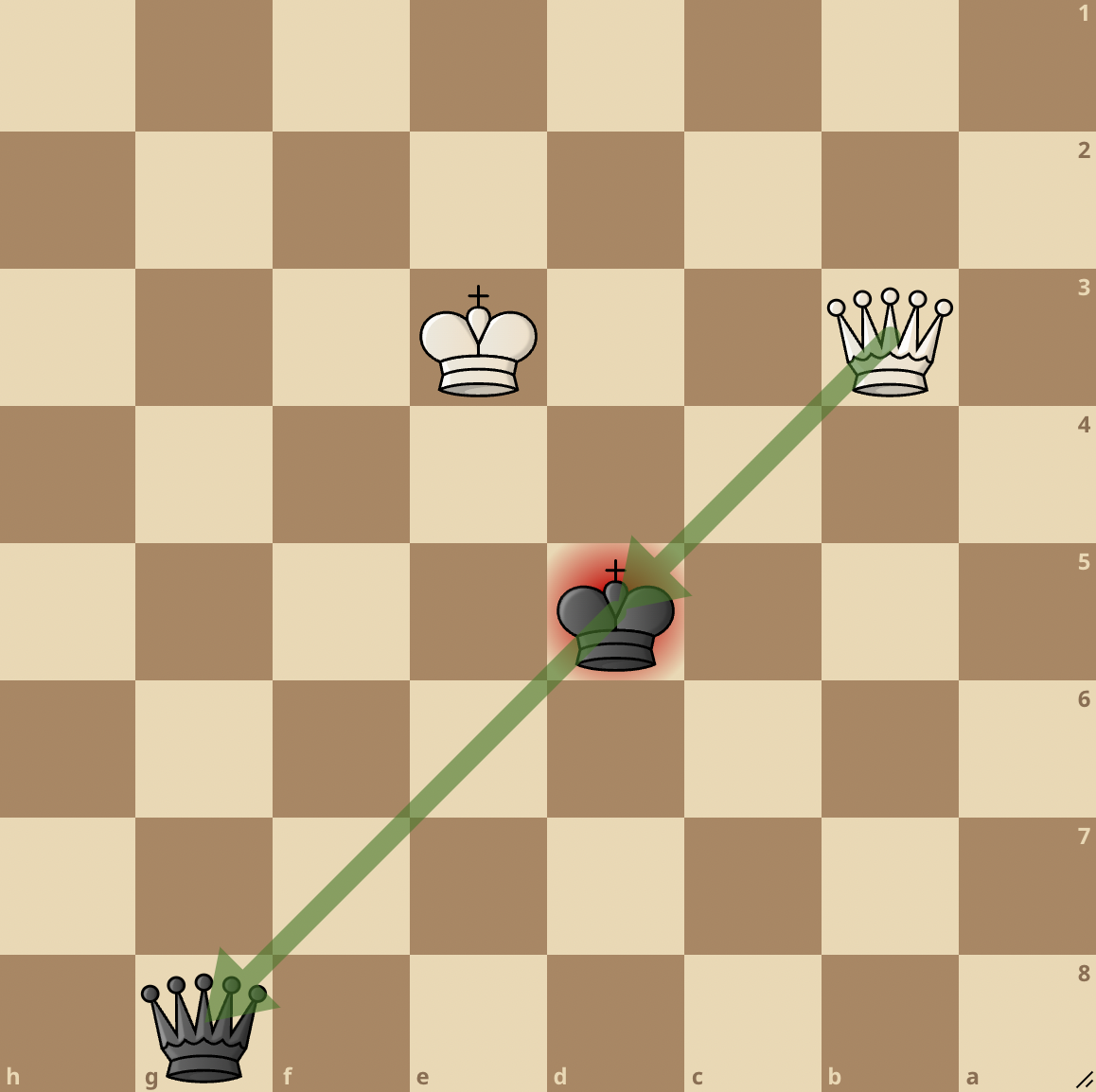
You can learn more about forks, skewers and every other important chess tactic not mentioned here below:
Avoid Isolated Pawns
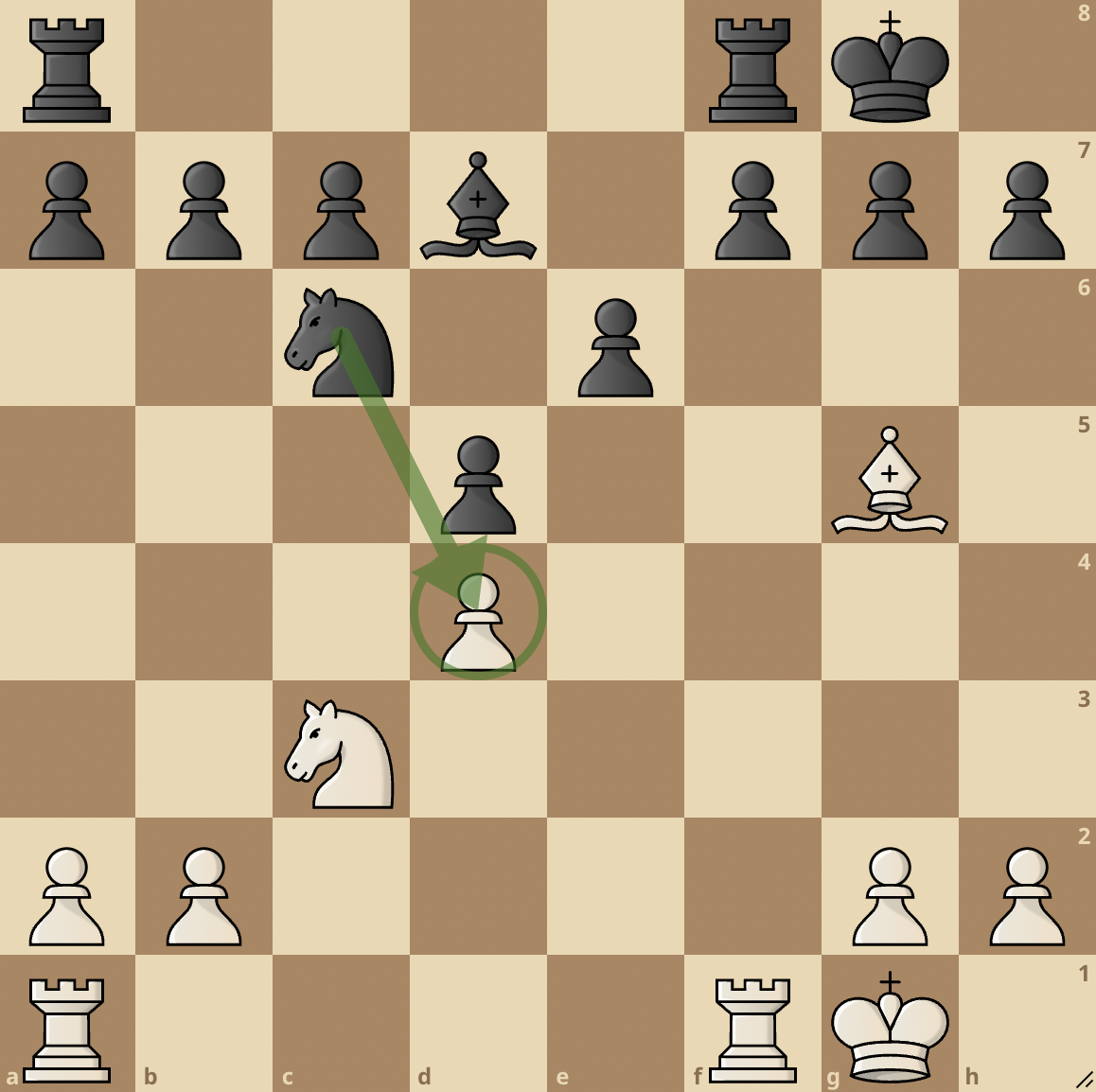
An isolated pawn is a pawn that has no friendly pawns supporting it. Friendly pawns are pawns of the same color.
Isolated pawns are usually a weakness because other pawns cannot protect them. The square by the side or in front of the pawn may become a good outpost for the opponent to station his pieces and launch attacks.
You should try to avoid creating isolated pawns in your middle game. This is because, more often than not, they become a problem as they are pretty challenging to defend and will be a target for your opponent to attack.
Therefore you should try as much as possible to connect your pawn with other friendly pawns, as it is easier to maintain a better pawn structure.
Create Outposts For Your Pieces
In the middlegame, you should always look for ways to create outposts for your pieces. An outpost is a square on the chess board where you can place your chess piece that will make it difficult for your opponent to attack or defend against it.
Knights are the best pieces to place on outposts. An excellent example of an outpost is a knight on a backward pawn.
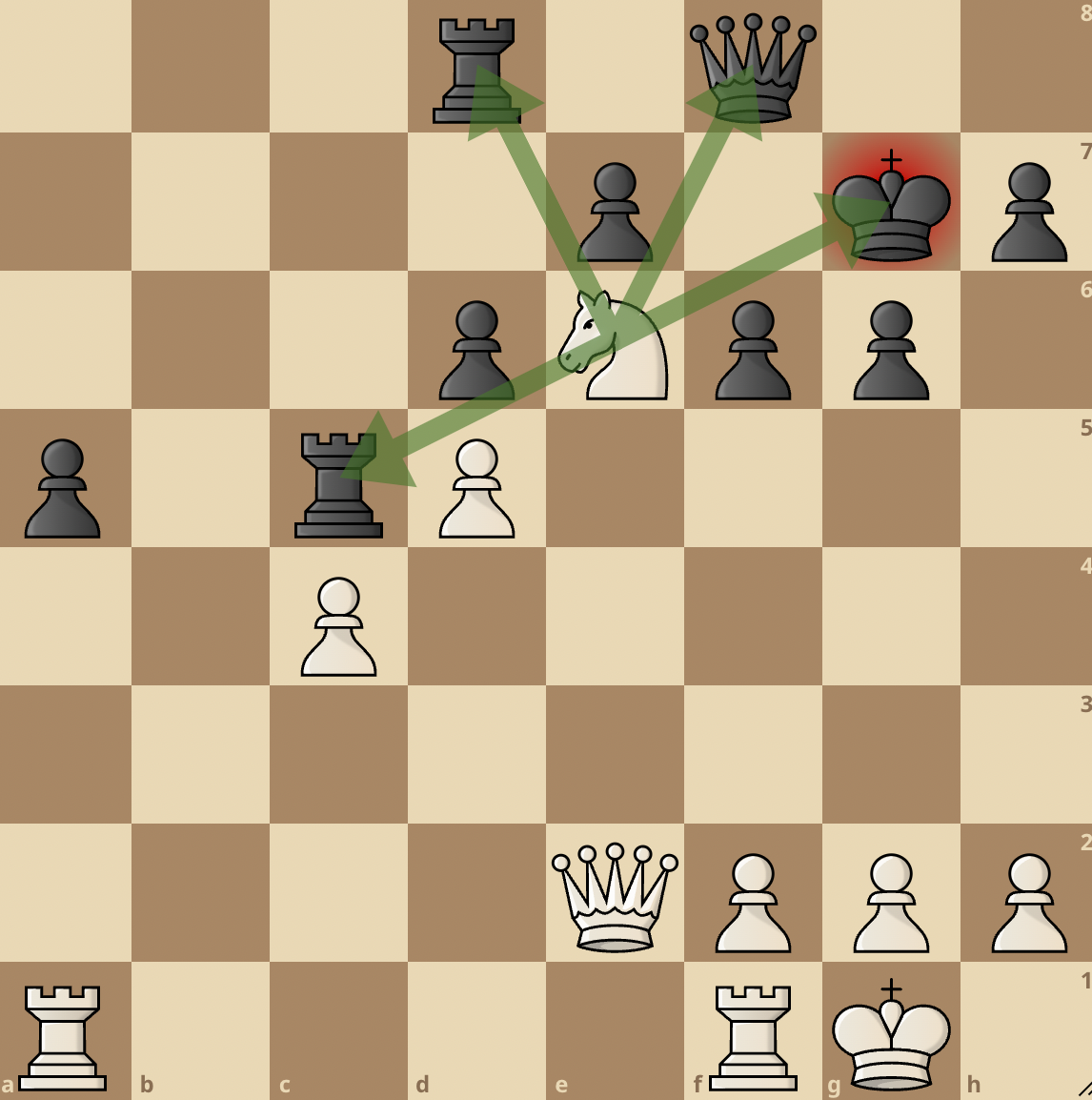
From the image above, we can see the knight occupying a major outpost e6 against the backward e7 pawn and carrying out a grand fork on the Black pieces.
Play Through The Middlegame of Experienced Masters
You can begin by studying the games of the more experienced players like International masters and Grandmasters in the openings where you play.
It aids in improving your opening understanding, but it also aids in identifying the various plans and concepts in the ensuing middlegame.
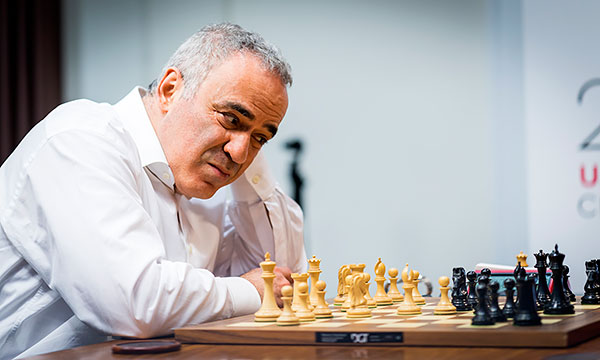
While doing so, you should note how they try to keep their pieces on certain squares.
Which pieces are maintained, and which ones are exchanged?
It’s necessary to keep an eye out for common patterns in these positions if you aim to improve your chess middlegame.
We’ve covered some notable games of a former chess champion. You can probably start there: 9 Best Games Of Alexander Alekhine You Should Know
Start Playing Correspondence Chess
Correspondence chess is an excellent way to practice and improve your chess middlegame skills because there is no time limit to adhere to.
By playing 2-to 3 correspondence games with a three-to-four-day time constraint for each move, you’ll have enough time to set up a chessboard to act out the game and think properly about strategies and plans to adopt.
That’ll help in knowing how to devise a successful plan.
Frequently Asked Questions (FAQs)
What is a good pawn structure?
A good pawn structure is one where all the pawns are connected and defending each other. Pawns are very important pieces, especially when it comes to the endgame.
Therefore, it is necessary to maintain a good pawn structure where all the pawns complement themselves. This also makes it harder for enemy pieces to attack them.
Read more here: All you need to know about Pawns in Chess
When does the middlegame start?
The middlegame starts when both players have completed their pieces’ development and put their king to safety by castling.
What is the difference between the opening, middlegame, and endgame in chess?
A chess game is divided into three stages: the opening, middlegame, and endgame. The opening comprises the first moves made by both players.
In the opening, players aim to develop their pieces, control the center and castle their king to safety.
The middlegame starts after the pieces have been developed and the king castles. Most of the action occurs in the middle game.
This is where players show their skills and try to outsmart their opponents through tactics and strategies that either lead to checkmate or a significant advantage going into the endgame.
The endgame is the last stage of a chess game; here, very few pieces are left on the board. The pieces available are usually pawns and minor pieces.
Also, the endgame is the last phase of a chess game, where the outcome of the game is decided.
Which is the weakest piece in chess?
The weakest piece in chess is the pawn. It also has a point rating of 1. The pawn is regarded as the most vulnerable due to its restricted mobility and considerably low strength compared to other pieces like the Rook and the Queen.
However, the pawn is not to be underestimated, as it can become a huge threat when it gets to the other end of the board. There, it can be promoted to any other piece except the king.
Also learn how to play the openings and endgame here:
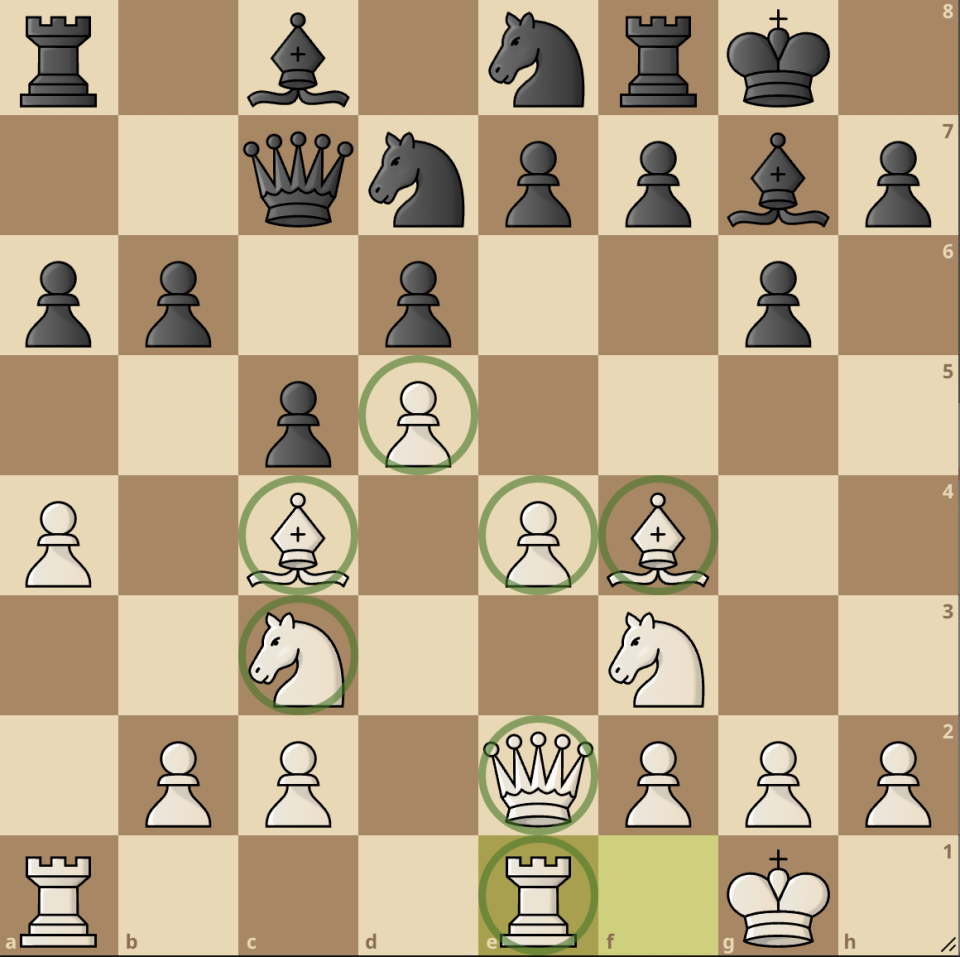

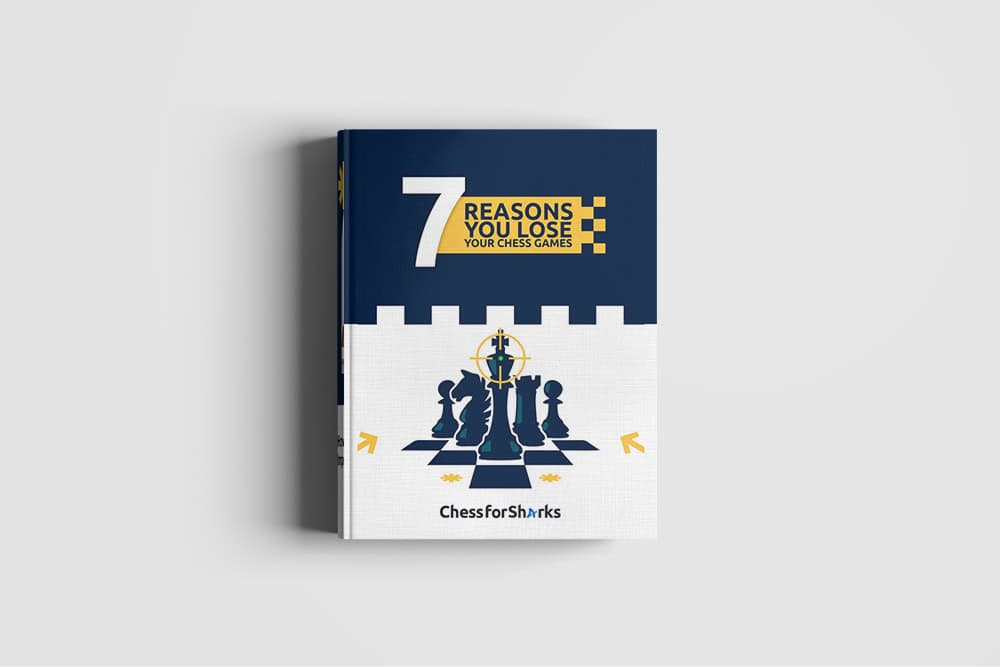
join the conversation